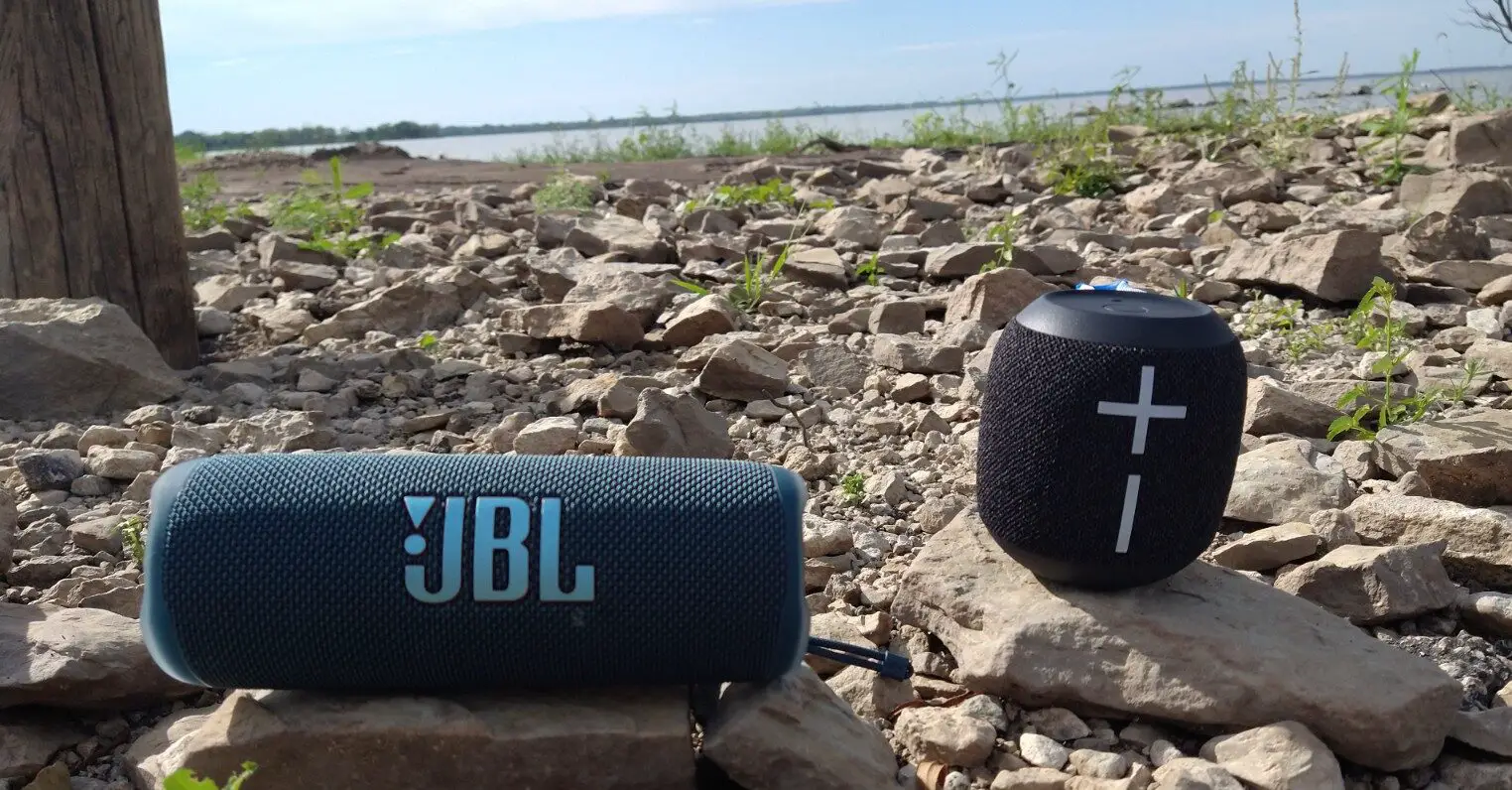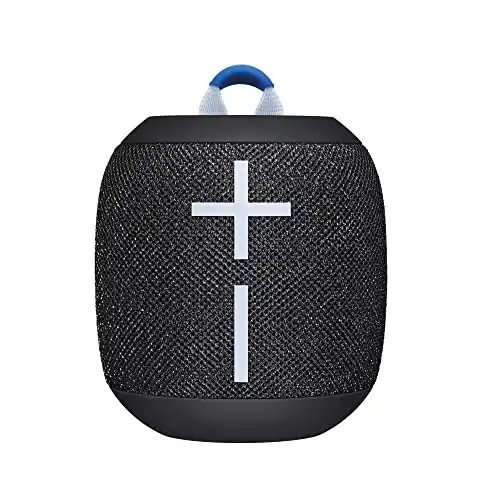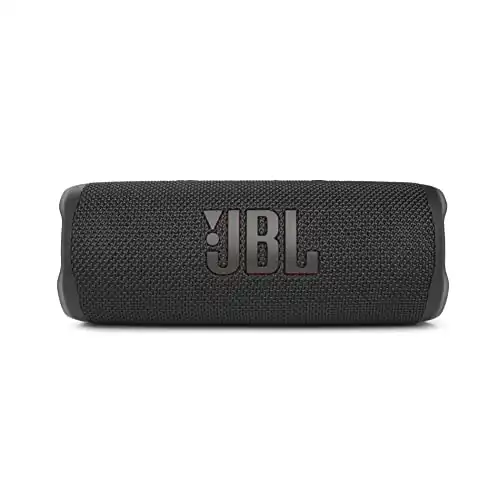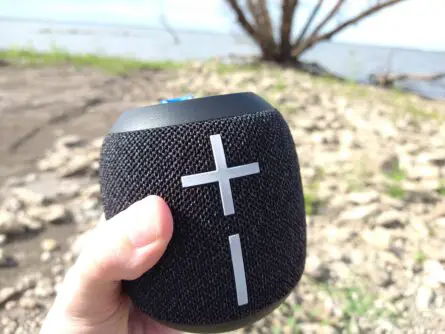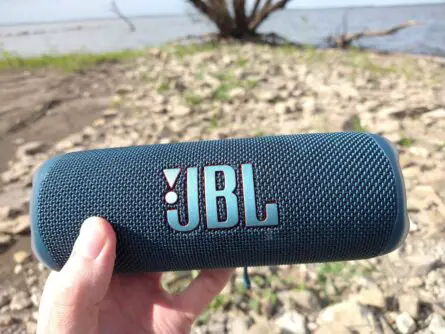Summary
When looking at the best speakers under $150, the JBL Flip 6 and the UE Wonderboom 3 will likely be on every list.
Both products provide durability, portability, and great sound quality for the price.
Flip 6 is a great all-around speaker with a warm, balanced sound profile and an esthetically pleasing design. However, Wonderboom 3 gives you some features that Flip 6 can’t compete with.
The 360 degree soundstage of Wonderboom 3 is as good as advertised. The battery life (12+ hours vs. ~8 hours) also favors the UE Wonderboom 3. Once you factor in that Flip 6 costs ~$40 more at MSRP, the choice becomes clear.
While I have previously stated how much I love the JBL Flip 6, the win here goes to the UE Wonderboom 3. However, the Flip 6 has a companion app, equalizer, and slightly better sound quality, so it might still be worth considering for some users. This is especially true if you are opposed to micro USB charging and the lack of a party mode on Wonderboom 3.
|
|
|
|
N/A
|
$159.95
|
|
Pros:
|
Pros:
|
|
Cons:
|
Cons:
|
- Excellent value
- Wide soundstage
- Best-in-class build quality & design
- Lacking in clarity
- Shockingly clear audio
- Adjustable equalizer (on app)
- Attractive design & high build quality
- Slightly lacking in battery life
~~~ Check Price: UE Wonderboom 3 ~~~
~~~ Check Price: JBL Flip 6 ~~~
Sound
From the start, we should admit there isn’t a clear winner for sound quality. But, there are key differences in the sound profile and performance of each speaker.
If you are looking for a warm, balanced sound that can accurately reproduce mids, the Flip 6 wins with ease.
On the other hand, the Wonderboom 3 has more punchy bass and — as is the Ultimate Ears tradition — it delivers a three dimensional sound that the JBL can’t compete with.
The Flip 6 brings slightly higher maximum volume, but it distorts at volumes above 70%. On the other hand, the Wonderboom 3 gets nearly as loud, but sounds pleasant all the way up to 80%.
Flip 6 excels at instrument separation, with acoustics and vocals sounding crisp. The bass also sounds more true, with less of a party speaker profile than the Wonderboom. While the Wonderboom 3 produced more bass than we had expected, the mids were less clear and had a tinny quality.
We have already named the Flip 6 one of our top speakers under $150, so I honestly didn’t expect the sound matchup to be this close. My expectations were that the Wonderboom 3 would be competitive with the Clip 4 (JBL’s budget offering), but nowhere near the quality of Flip 6. But the sound test proved me entirely wrong.
Flip 6 provides some customization with the EQ which can be accessed on the companion app (more detail on this below). The Wonderboom 3 has no equalizer, so you are stuck with the standard sound profile unless you want to add a third-party app on your connected device.
Wonderboom features an “Outdoor Boost” button. This button adjusts the sound profile for outdoor use — mainly by turning the bass higher.
During testing, the change when using outdoor boost was more subtle than I expected. Plus, the out-of-the-box sound profile is already bass-heavy. So, while I don’t see much benefit in the feature, it is a nice addition on a speaker that is lacking an equalizer.
So, the bottom line is this:
- Who should buy the UE Wonderboom 3? Anyone looking for a sub-$100 portable that can compete with more expensive competitors. If soundstage and immersive audio matter to you, the Wonderboom 3 may be the best option on the market. By adding a third-party equalizer app on your phone or other device, you can correct the only significant flaw on this device — underemphasized mids.
- Who should buy the JBL Flip 6? Anyone looking for a sub-$150 portable that does everything well. While there isn’t anything that is “best in class,” the speaker has a balanced sound profile that reproduces audio very accurately. Plus, the app gives you a built-in equalizer to adjust audio settings as you wish.
Neither speaker is a hi-fi, audiophile-approved product. But considering the price range and portability, both rate somewhere between good and great.
Sound winner: Flip 6 if you like a balanced sound profile, but Wonderboom 3 is the winner if you consider the price difference
Design
Wonderboom 3 and Flip 6 are both lightweight (~1 pound) speakers that can easily be carried with one hand and thrown into a gym bag.
The key design difference is that the UE product is meant to be used vertically, while the JBL works best in a horizontal orientation. Flip 6 has a longer, thinner cylindrical shape. Wonderboom 3 has a more squat, rounded shape.
The base of the Wonderboom is flat, which enhances the stability. The speaker cover extends 360 degrees around the device, with no blocked areas to cause “dead zones” in audio. The Flip doesn’t have this same 360 degree design, so there is more of an auditory “sweet spot” located at the front of the speaker.
Two pecularities of the Wonderboom 3 are micro USB charging and the absence of a battery status light. Both of these will be discussed more below. Alternatively, Flip 6 features the more common USB-C charging, as well as a battery status light on the device.
Flip 6 has a rubberized feel to every inch of the device. The fabric wrap over the speaker cover is smooth and tight, so it isn’t likely to get ripped or damaged.
The Wonderboom 3 has a more distinctive plastic and fabric texture. The top and bottom are a durable, 31% recycled plastic that has a smooth surface which is pleasant to the touch. The speaker cover wrap is a looser, coarser fabric with a texture similar to (less rough) burlap. So the fabric is more likely to be caught, snagged, and torn.
Both speakers have simple, easy-to-use controls.
The Wonderboom has three buttons on the top — one for power, one for pairing, and one for playing/pausing/skipping tracks (these buttons are unlabeled, but easy to figure out). The face of the speaker has the classic Ultimate Ears design with oversized “+” and “-” buttons. The bottom of the speaker has a button for Outdoor Boost mode, as well as the weather door to seal off the charging port.
On the Flip 6, you find four buttons on the top — PartyBoost, volume up, volume down, and play/pause. The bottom of the device has a power button and a bluetooth button, as well as the USB-C charging port.
Both speakers have buttons that provide nice cosmetics but are actually awkward to press. However, this shouldn’t be a deal-breaker by any means.
Overall, both speakers are well-designed and well-built. The speakers are easy to carry with one hand while also being simple to operate.
Design winner: Tie (it is just a matter of personal preference)
Durability
In terms of durability, the speakers are quite similar. However, the Wonderboom 3 has a few distinct advantages.
Each features an IP67 waterproof rating. This means the speakers are waterproof and dustproof for casual use. However, the Wonderboom 3 floats, which adds a further degree of “waterproofing.”
Next, only the Wonderboom 3 has a rating for drop resistance. UE states that it has been tested to 5 feet. However, when considering the build quality of Flip 6, I would expect it to also withstand drops from 5 feet without issue.
UE provides a 2 year warranty on the Wonderboom 3. This is uncommon among bluetooth speakers, especially in the sub-$100 range. JBL backs the Flip 6 with the industry-standard 1 year warranty only.
The Flip 6 has a waterproof charging port without a cover. Wonderboom 3 has a “weather door” to protect the port. But with the IP67 rating, neither will have issues with water ingress causing damage.
The final noteworthy difference is the radiators located at the poles of the Flip 6. The bouncing motion of the radiators is a fun feature when the speaker is playing, but this also provides a vulnerable area at each end of the speaker. On the other hand, the poles of the Wonderboom 3 are durable plastic with no moveable parts or noticeable vulnerabilities.
Both speakers are made in China by reputable companies — the Flip 6 is a Harman product, while the Wonderboom 3 is a Logitech product.
Overall, the Flip 6 scores good marks for durability — but the Wonderboom 3 scores great.
Durability winner: Wonderboom 3 (Drop resistance, a longer warranty by a year, and no vulnerable ends)
Battery
Flip 6 has a 4,800 mAh battery. Wonderboom 3, on the other hand, doesn’t disclose specifics about the size of the battery.
However, Flip 6 is marketed as a 12 hour runtime, while Wonderboom 3 is marketed as 14 hours. In testing, the difference between the two devices was even larger than that.
Flip 6 fell short of 8 hours on a charge, even when the speaker was kept at a low (50%) volume. Wonderboom 3 didn’t get quite 14 full hours at 50%, but it was more than 12 hours. Granted, 50% volume on Flip 6 is slightly louder.
Neither speaker features a power bank for charging a phone or other device.
Despite the UE winning on battery life, there are actually a few advantages in the JBL’s favor.
First, the Wonderboom 3 still uses the dated micro USB port for charging. Flip 6, on the other hand, uses the more modern USB-C, which has become the industry standard. This shouldn’t be a deal breaker, but it is much more likely that you will have a USB-C cable sitting around than having access to a micro USB.
Next, the Wonderboom 3 has no battery status light. With Flip 6, you can check the battery life on the app or on the device itself (via the battery status bar).
The only way to check battery life on Wonderboom 3 is to hold the “Volume Up” and “Volume Down” buttons at the same time — this makes a strange beeping noise that evidently tells you whether your battery is high, low, or somewhere in between.
Battery winner: Wonderboom 3 for a much longer battery life, as long as you don’t mind micro USB charging and the lack of a battery status light
Software
One key difference between the Flip 6 and Wonderboom 3 is that only the Flip has a companion app.
The JBL Portable app isn’t particularly feature rich, but it gives you an EQ to adjust bass, mid, and treble. It also allows for firmware updates, access to the PartyBoost mode, and battery status.
With the Wonderboom 3, you need to download a third-party program (on your source device) to adjust the equalizer. This isn’t a big deal, but it is inconvenient nonetheless.
Despite lacking a companion app, the Wonderboom 3 was incredibly easy to pair to a phone. Rather than having to manually open “Settings” and then “Bluetooth,” UE automates the process (when connecting to an Android).
As soon as I powered the speaker on, my phone was greeted by a popup with a picture of the speaker and a “Connect” button. I clicked the popup on my phone, waited a few seconds, and the speaker was connected. This Fast Pair feature is only available for Android, however, so that’s tough luck for the (*seemingly) 97% of people that use iPhone instead.
In keeping with the Ultimate Ears tradition, the company doesn’t disclose which version of bluetooth the speaker uses. Instead, they just advertise a 130 foot bluetooth range. Since the speaker paired easily and maintained a reliable connection throughout testing, we won’t worry too much about it.
Flip 6 uses Bluetooth 5.1 and functions seamlessly.
When it comes to party modes, the Flip 6 has PartyBoost, while Wonderboom 3 is limited to dual speaker pairing. PartyBoost allows you to connect numerous JBL speakers together wirelessly, but they need to be recent versions. The Wonderboom, on the other hand, can only connect to one other device, and it must be another Wonderboom 3.
Both speakers have a power on/off noise which is somewhat annoying. During testing, I never figured out whether this could be muted. It isn’t anything worth worrying about, but it is noteworthy because it could drive some people crazy.
Neither device has WiFi, a mic, a power bank, or any other premium features. Instead, these are simple bluetooth speakers that function well without many bells and whistles.
Software winner: Flip 6 (although it doesn’t feel particularly “smart,” it has a companion app, adjustable EQ, and battery status on the app)
Final thoughts
If you need an EQ, USB-C charging, or a companion app, then JBL Flip 6 should be your choice.
Otherwise, the smartest choice is to save the ~$40 and choose the UE Wonderboom 3. The sound quality might be slightly worse, but this is highly subjective (especially if you prefer the Wonderboom’s punchy bass to the more natural mids of the Flip). And the soundstage on the Wonderboom is wider and more immersive by a significant margin.
You also get an extra year on the warranty (2 on UE vs. 1 on JBL), nearly double the battery life, and a more durable design by choosing the Wonderboom 3.
Despite declaring Wonderboom 3 the winner, I stand by my previous assessment that the JBL Flip 6 is one of the best sub-$150 speakers on the market. In fact, even 9 months after purchasing and reviewing the speaker, the Flip 6 is still my “daily listening” speaker among portables.

